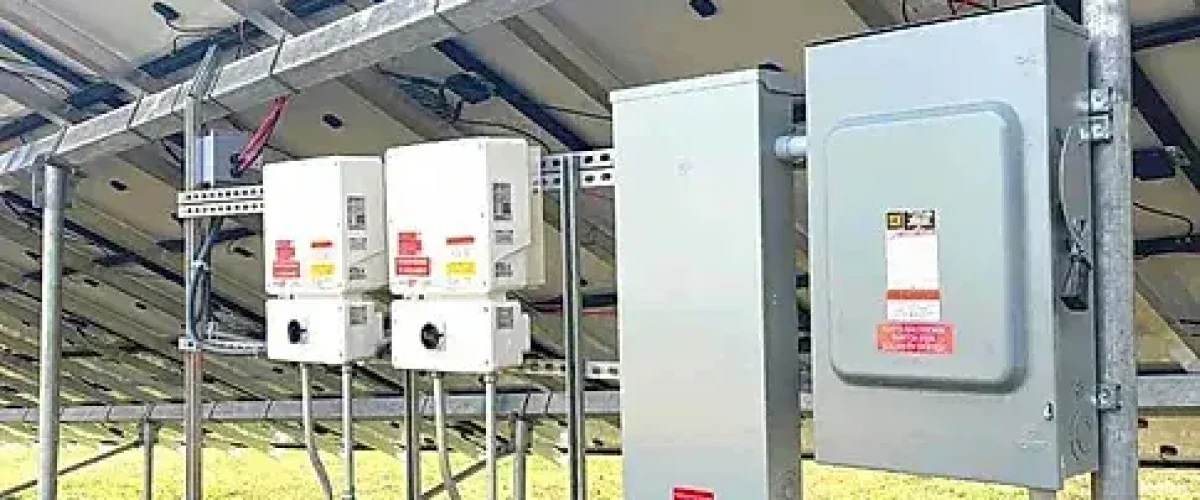The use of solar energy has gained popularity and has become a sustainable source of power to homes, businesses, and even the whole community; however, the biggest question that people will always ask when thinking of solar panels is, how much energy can a solar panel produce? The solution will vary depending on several factors including the type of panel, location, weather, and size of your solar panel system. This blog will discuss how much energy solar panels can produce, what factors determine this, and how you can maximize your solar energy production.
How Solar Panels Work?
Before we get into the energy generating capacity of a solar panel, it is worth knowing how solar panels work. The photovoltaic effect is a process that uses sunlight to generate electricity using solar panels.
- The sunlight photons hit the panel surface of the solar cells.
- These photons excite electrons, creating an electric current.
- The electricity is converted into useful electricity through the wires.
The amount of energy generated is based on the amount of sunlight that is available to the panels, the efficiency of the panels to convert the sunlight, and the number of panels that are installed.
Factors That Affect Solar Panel Energy Generation
The power production of a solar panel may also depend on other factors.
Let’s look at these in detail:
Size of the Solar Panel System
A significant factor that determines the amount of energy your solar panel system can produce is its size. An average residential solar panel system typically is comprised several panels. The greater the number of panels, the more energy your system is able to generate.
Average Solar Panel Output: An average solar panel can generate between 250 to 400 watts in optimum conditions.
System Output: A system consisting of 20 panels, each with 300-watt output, could produce up to 6,000 watts (or 6 kW) in ideal conditions.
Location and Sunlight Hours
Your location is an enormous factor in determining the amount of energy that your solar panel system can produce. The greater the direct sunlight your area gets, the more energy your panels will produce. States such as California, Arizona, and Nevada have more sunlight in the United States than those areas with long winters and cloudy days.
Sunlight Hours: Solar panels produce maximum energy during the high sunlight hours which is between 4 to 6 hours a day depending on the area of location.
Location Counts: You might get more sunlight in the year in sunnier regions, and thus, your solar panels will be more productive. As an example, where it is sunny, you may have 6 hours of full sun daily whereas in a cloudier place you may only have 4 hours.
Time of Year
Seasonal variations also affect solar panel performance. In the summer months, when the days are longer, solar panels are likely to produce more energy. On the contrary, the sun is lower in winter, and the days are shorter, resulting in less overall energy generation.
Summer: During summer, the solar panels can produce much more energy because of the longer days and the stronger sun.
Winter: During winter, the days are shorter and the sun is not as strong, which means that energy generation is lower, although solar panels are able to produce power even in cold weather.
Panel Efficiency
The efficiency of your solar panels is the amount of sunlight that is converted to usable electricity. More power can be produced with less space using high-efficiency panels. The efficiency of modern solar panels is normally 15 to 22 %.
Greater Efficiency: Greater efficiency panels (e.g., 22 %) produce more energy per square foot than lower efficiency panels, so they are well suited to rooftops with limited space or where sunlight is not as available.
Reduced Efficiency: Reduced efficiency panels (e.g., 15%) can take up more space to produce the same amount of energy as higher efficiency models.
Orientation and Tilt of Panels
The angle and direction of your solar panels’ installation are also factors which influence the performance of solar panels. Ideally, solar panels are supposed to be facing south (north side of the northern hemisphere) to get as much sunlight as possible. The panel angle must be set based on your roof angle and the location latitude.
Proper Angling: The best angle for solar panels in the U.S. is dependent on your location. As an example, solar panels in the southern states may be set at 15 to 30 degree angle, whereas in the northern areas, a steeper angle would work better.
Fixed or Adjustable: Other systems enable you to change the angle of your panels to get the most sunlight in winter and summer.
How Much Energy Do Solar Panels Generate?
The energy that your solar panels will produce will be determined by the above factors.
To give you a feel of the amount of energy you can generate, here is an example calculation:
Let’s assume:
You have 10 solar panels with 300 watts.
The place you live has an average of 5 hours of sunlight a day.
Daily Energy Production = Panels x Watt per panel x Sunlight hours
The daily energy production = 10 panels x 300watts x 5 hours = 1500 watt-hours or 1.5 kWh per day.
Therefore:
The energy production in a month = 1.5 kWh/day x 30 days = 45 kWh /month.
This is a conservative estimate and the actual production can differ depending on the location and panel efficiency among others.
How Much Does This Generate in Real Life?
Typical Household Consumption: The typical American household consumes approximately 877 kWh a month. A 10-panel system with 45 kWh per month would, in this case, produce approximately 5% of the average home electricity demands.
Greater Systems: In order to completely energize a normal household, a 5 kW system (approximately 20 panels) would be necessary, and the output of such a system would be about 600 kWh each month, which is sufficient to supply the energy requirements of most or all of a home.


